explore
Jungle Lowlands - Resources
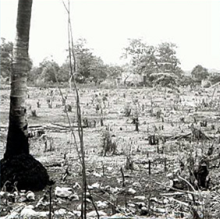
The earliest known settlement in the lowlands occurred some time between 1200 - 800 B.C. Small groups of nomadic hunters and gatherers chose to live a more sedentary life, and establish subsistence farming. It was once believed that slash and burn agriculture (an example from Belize pictured left) was the only possible method of cultivation by early people living in humid tropics. We now know that this was not true, as the Maya developed highly sophisticated hydraulic systems, terracing, canal networks and made use of swamp areas through the creation of raised fields - a combination of draining, elevating, and fertilizing fields capable of continuous planting and production.
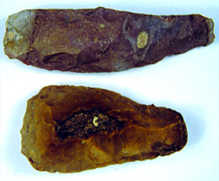
Stone tools were used to aid in the cultivation of maize, cacao, and other crops. Most stone tools were chipped and flaked from nodules of chert and fashioned into axes and hammerstones necessary for planting, harvesting, and maintaining milpas (fields). A volcanic, glass-like black rock called obsidian was used for producing finely honed blades, with edges more precise and sharp then modern surgical scalpels.
Image: The Maya used tools, such as these two chert axes from the site of Tipu, to cultivate their land and harvest their crops.
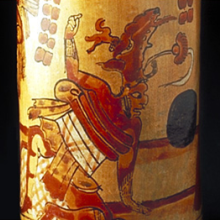
Ancient people from Mesoamerica also harvested honey and rubber. Rubber was used in numerous ways, but most importantly in the production of balls for use in the Mesoamerican ballgame. Rubber and honey from the rainforests were traded and exchanged throughout Mesoamerica, along with valuable commodities such as salt and fresh fish otherwise not available to all communities in the region.
Image: This detail from a Maya cylinder vase depicts a ballplayer dressed in what is likely formal ceremonial or pre-game garb. The large, black circular object is the ball, which was made of rubber. G83.1.109
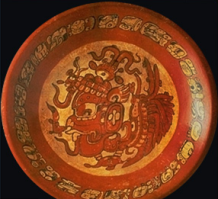
Unlike ancient Andean cultures, ceramics were introduced in Mesoamerica before the textile industry was developed. The first evidence of pottery in Mesoamerica occurred by 2,500 B.C. By the Classic Period (A.D. 250 - 950), jungle lowland cultures were producing polychrome vessels for burial offerings, ceremonial and daily use that were durable methods of communicating messages and recording historical events (pictorially and with hieroglyphics.

Technological advancement in domesticating cotton in warmer, lower elevated regions, and maguey fibre in drier higher elevations, led to the development of the textile industry in Mesoamerica. Communities organized the processing, spinning, and weaving of textile fibres for commerce, as well as to fulfill tribute demands by the governing elite. Weaving was an essential cultural activity as both commoners and nobles wove. Textiles were circulated in vast quantities over great distances through commercial trade networks and through gift exchanges.
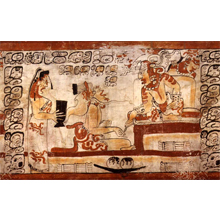
The painting on this vessel provides us with a glimpse at ways the Maya used woven cloth, both as garments, as shown on the two figures, and as tribute offerings as seen by the cloth bundles presented to a seated Lord. G83.1.129